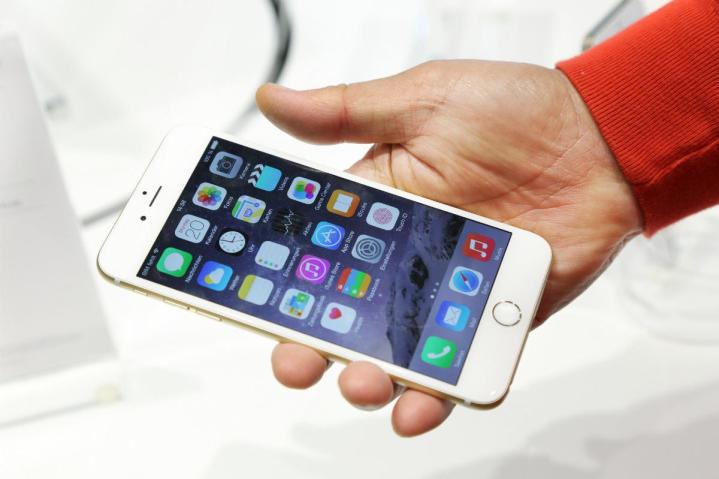
It’s not clear how many units of this older version of Apple’s largest phone are affected by the glitch, which causes some displays to show a gray bar at the top or in some cases becomes totally unresponsive.
The issue was deemed so serious by some users that they launched a lawsuit against the tech giant in the summer.
In a message posted on its site on Thursday announcing the repair program, Apple puts the issue down to some serious user mishandling rather than a manufacturing error.
“Apple has determined that some iPhone 6 Plus devices may exhibit display flickering or multi-touch issues after being dropped multiple times on a hard surface and then incurring further stress on the device,” the Cupertino-based company said.
But the fix doesn’t come free. Apple says it’ll repair affected phones for $149, though anyone who’s already paid more to repair it through Apple or an Apple authorized service provider can make a claim to have the difference refunded.
Anyone with an iPhone 6 Plus experiencing touch disease can take it to an Apple Store for repair charged at the new set rate of $149. Alternatively, they can take it to an authorized service provider, where the same fee will be charged. Apple notes that wireless carrier partners are not participating in the new program, and that it’s only eligible for the larger, 6 Plus device.
Following a growing number of complaints from iPhone 6 Plus owners earlier in the year, device repair website iFixit decided to take a closer look at the matter. After speaking to experts and examining the phone’s interior, it put the problem down to an issue with the chip-board where a crack could occur and grow gradually over weeks and months, causing increasing trouble for the user over time.
“At first, there may be no defect at all,” iFixit said in August. “Later you might notice that the screen is sometimes unresponsive, but it is quick to come back with a hard reset. As the crack deepens into a full separation of the chip-board bond, the periods of no touch become more frequent.”
For many customers experiencing the problem, Apple’s repair program will be considered a step in the right direction. However, it’s unlikely to satisfy any users who can’t recall ever dropping their device “multiple times on a hard surface,” instead believing it’s a manufacturing issue for which no repair fee should be charged.
We may not have heard the last of this so-called touch disease.


